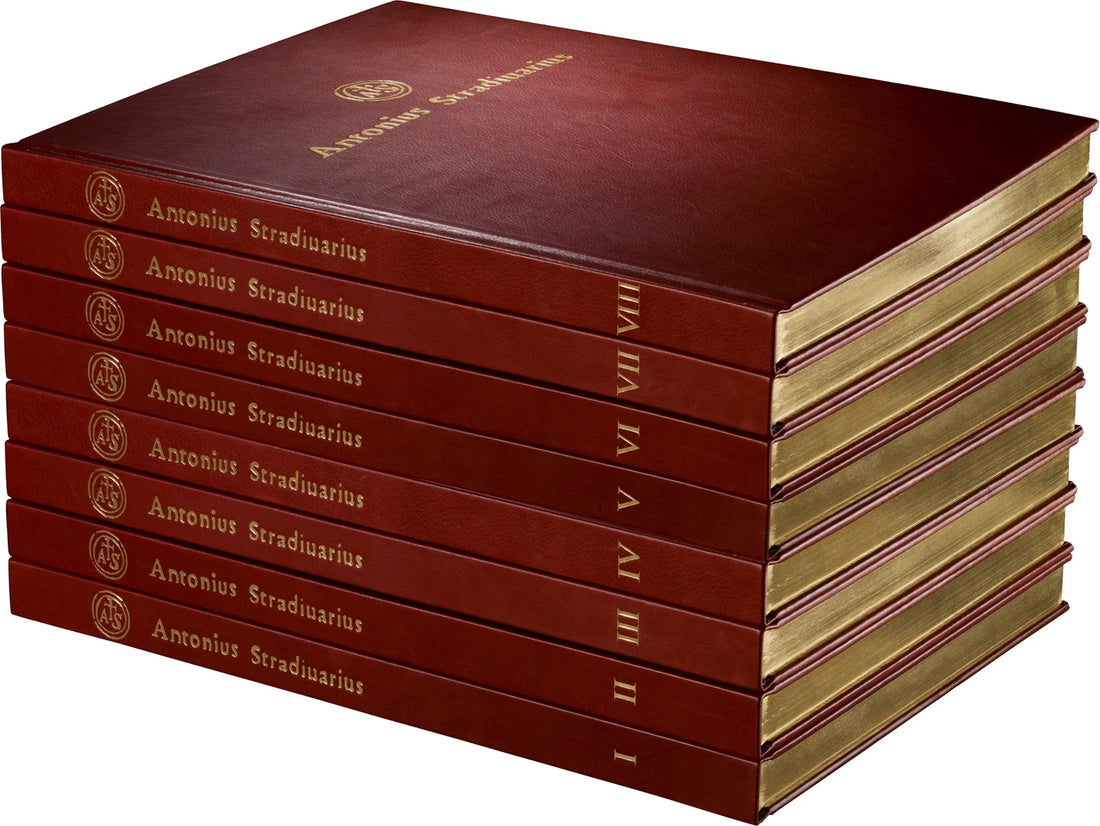Many years ago, in the course of documenting string instruments, we repeatedly had the opportunity to photograph some of the instruments of the legendary Antonio Stradivari. After the quality made another quantum leap with digital photography, we decided to tackle this mammoth project. As in the past, the start of the project was a bit slow. But after just a few months we received support from the most important violin makers, dealers, collectors and museums worldwide. With 300 Stradivarius instruments photographed, we closed the project in 2016 and published these instruments in a eight-volume work. All recordings, including the cellos, were reproduced 1:1 using fold-out boards!
The innovative and complex drip-off technique also enabled an image quality that gave the viewer the feeling of a real layer of varnish over the wood and one could think that they could look “into the varnish”. We took several views of each Stradivarius in order to be able to show the instrument in its full bloom and with all its fine details. Close-ups with 200% zoom are also included of the chest area, and so you can see the details of the instruments from the “Amatisé” to the “Late Period”, which impressively document the grandmaster's constant change and willingness to experiment. Some violin makers have already noticed “open cracks” in one or two instruments due to the great transparency and sharpness of the photos and, last but not least, the great sensitivity of the photographer Jan Röhrmann, who managed to place the light reflections in his photos in such a way that The hollows and curvatures can be seen without the overall picture being disturbed by the reflections.

Regarding color fastness, a big issue in printing, we opted for a complicated and sophisticated system that enabled us to transport color information from set to print, something the human brain can only do to a limited extent. Finely tuned proofs of the instruments, calibrated monitors and perfect pre-press were the prerequisites for this. However, the final touch and the famous icing on the cake was always the on-site inspection in the print shop. Every single sheet was checked by us on the Heidelberg printing press, checked for color saturation and consistency with the existing proof and then printed. In some cases we even had the original Strad in the print shop! We received very good feedback from the owners of the Stradivaris, which means a lot to us, since they are the ones who have the original “at home” for comparison… and so the additional effort was worth it in the end. The entire printing process took 8 weeks, 7 days a week and 12 hours a day. That was the “summer vacation” 2010! We have decided to present the measurements, extra views of the snails, busts/F-holes and the bulge curves on a DVD. This means the user can easily carry out comparative studies and, for example, For example, click through the snails of Stradivari's entire creative periods. The measurements are given on a prepared PDF that interested violin makers can easily print out for their work. At the end, the sound of these instruments is not neglected and there is a recording of Koh Gabriel Kameda on his “Holroyd” Stradivarius.
We were supported in terms of content by the London Stradivari experts Florian Leonhard, the House of Beares represented by Simon Morris and Carlo Chiesa from Milan. Alessandra Barabaschi was commissioned to research the individual instruments and, with her Italian roots, was granted special access to the archives and information. At this point we would like to thank all the owners who supported this project with their great cooperation and commitment!

